
Making Sense of the Bible
Have you ever felt overwhelmed with the Bible? There are a lot of pages and a lot of words in that book. You might have experienced the pain of starting in Genesis to find our eyes glazed over as you attempted to understand the point of the Bible. My first mentor in the Christian faith, Milt Andrews, gave me my first Bible when I asked him one day where to begin reading. He told me that the Gospel of John is an excellent place to start for most people. That might not have resulted in much change then, but it helped to hear someone give some guidance.
Over time, the people I was reading about who were around Jesus became real by studying the historical and cultural context behind these ancient writings. That is because they were real people. I was just getting acquainted with Jesus like they were but through their stories. While at Oak Hills Christian College in Bemidji, MN, I learned about exegesis, drawing the author’s meaning out of a text as it was originally intended for the original audience. My interest in studying the Bible became a priority over everything else and began making more and more sense to me. Still, I yearned for simplicity. What is the message of the Bible? How do we communicate the entire contents of the Old and New Testaments to someone without causing people’s eyes to glaze over? The goal is to be clear and concise.
The OT pointed forward to Jesus while the NT pointed back to Jesus. The NT also pointed back to the OT to point forward to Jesus! Both are pointing forward to His return, at which time everyone in human history will spend eternity with or without God. Jesus is a summary of the contents of the entire Bible.
Can you think of a way to describe the entire Bible in a more simplified way? Please share your thoughts by writing them out.
So, how should we view the Bible? The following diagrams provide a visual illustration of what the Bible communicates:

The OT pointed forward to the coming Christ (Messiah), or Savior of humankind. If we try to read and understand this truth without looking at the NT, it is unlikely, perhaps impossible, to come to the knowledge of faith in God that He desires for us. Therefore, we have the New Testament.
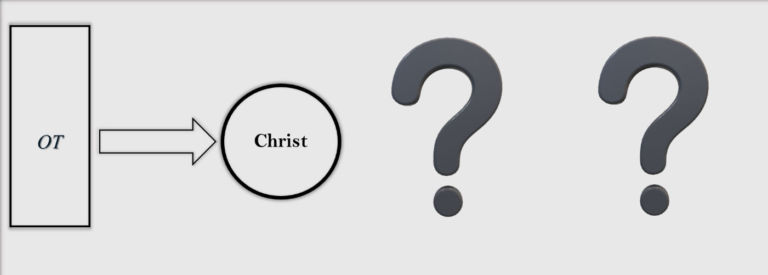
Jesus of Nazareth satisfied the tension of the OT broken relationship between humankind and a holy God through His life, death, resurrection, and ascension above the heavens (or beyond the universe). Jesus claimed to be from above, meaning outside of this physical universe. He came to make the Father known, meaning He came to make the character and nature of God known and how created human beings can know Him.

The NT is the record of the long-awaited Messiah, Jesus Christ, and the authors pointed back to His life as the pinnacle of history throughout the universe.
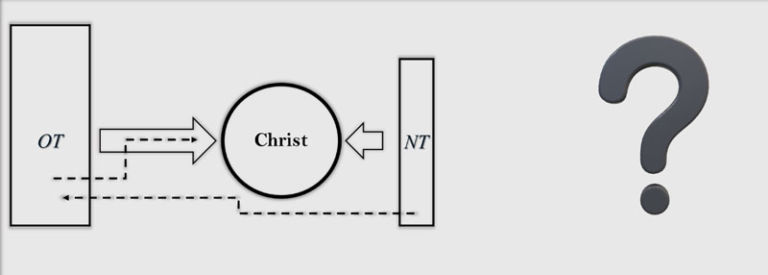
The New Testament reveals and confirms Jesus as the Creator of the universe, and authors pointed back to the OT to demonstrate that He is, in fact, God in human form. The authors then point forward in history to the future reality that Jesus is returning once more.
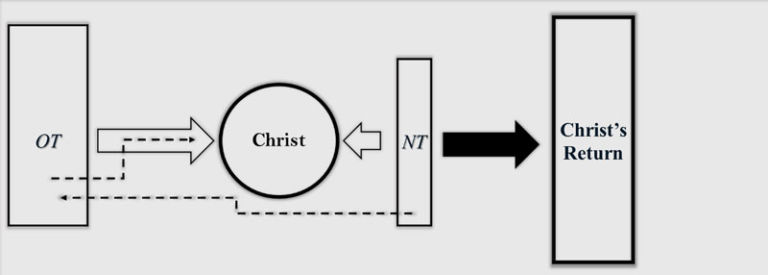
At His second coming, humankind will enter into a new era involving two realities: eternity with God or eternity without God. My prayer is for more people to join the reality of eternity with God. There is only one way that happens regardless of a million theories of opinion. Sin is the problem. Jesus is the solution. The Bible is all about an eternal relationship with God in Christ.

Old Testament authors pointed forward to this relationship with God, and Jesus is the answer to the question of how that is possible. The Bible has always communicated this two-destiny eternal reality.
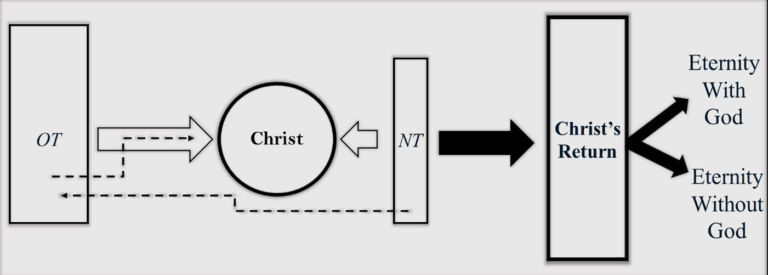
Some people know that I have never met my biological father. That is just part of my story, but it has taught me important truths about the Bible and the human experience. There was a time that I did not know my Heavenly Father, but that changed when my belief in Jesus as Savior became a relationship with Him. Scripture teaches that every human being is born into a broken relationship with God. The only remedy for this separation is through belief in the life, death, resurrection, ascension of Jesus Christ, and the sending of His Holy Spirit to dwell within the believer. The Spirit of God is the essential component to guarantee the eternal reality with God.
The Bible points forward to the return of Jesus Christ. Those who have a relationship with God through faith in Jesus Christ as their Savior will exist and be sustained eternally by God in a harmonious reality without any pain or suffering, or death. Those who do not know God through Christ do not possess the necessary element for eternity with God: His Holy Spirit within them. The destiny for this second group is eternal separation from God. Pray for His Holy Spirit so you will not be part of that second group.
To summarize, the OT points forward to God coming into the physical creation to bring justice to the broken world. The NT confirms that the Savior came. He came in human form as Jesus of Nazareth. He is coming again to put an end to the broken world once and for all. Those who believe the message that they need Jesus for eternal union with God will spend eternity with Him. Those who do not will spend eternity apart from Him.
The message of the Bible, reduced to a simple statement:
The Old Testament pointed forward to Jesus, while the New Testament pointed back to Jesus. Both pointed forward to His return, at which time every human being in history will spend eternity with or without God.

This visual is one way to view the entire Bible from start to finish. It is accurate and captures the essence of the Old and New Testaments. During a couple’s retreat in Red Feather Lakes, CO, one winter, my wife and I brainstormed with friends of ours for an answer to summarize the Bible in a few words. The result: Human history focusing on Jesus Christ and relationship with God. One friend in our Adult Sunday School class said that the Bible is everything we need for life and godliness, a quote from 2 Peter 1:3. The one-word answer is, of course, Jesus. The purpose of the Bible is to point us to Jesus. Not just to believe in Him, but to know Him.
With this truth in mind, reading the Old Testament becomes less mysterious. The Bible makes the most sense through the lens of Jesus as the perfect sacrifice for sin. The Lord’s intention for us before time began was to know His love for us. The Creator of the universe has communicated to His creatures.
The Gospel of John begins by pointing to the introductory words of Genesis to point to Jesus. Then, John points to the final OT figure, the one anticipated to make straight the way for the Lord:
John [The Baptizer] replied in the words of Isaiah the prophet, “I am the voice of one calling in the wilderness, ‘Make straight the way for the Lord’” (John 1:23, NIV).
Although we read about John the Baptist in the New Testament, he was the end of the Old Testament. The tension of God’s Redemption promised in Genesis 3:15 is broken with Christ Jesus, and John was His foreordained spokesman. The last book we have in the OT is the Prophet, Malachi. This man of God wrote about John the Baptist and Jesus, and then there was a clock ticking as empires came and conquered while the descendants of Abraham with the promises waited:
“I will send my messenger, who will prepare the way before me. Then suddenly the Lord you are seeking will come to his temple; the messenger of the covenant, whom you desire, will come,” says the Lord Almighty (Malachi 3:1, NIV).
That tension grew for centuries after the Jewish people returned from exile in Babylon in the 6th-5th century B.C. See how John, the beloved disciple, began his gospel by introducing John the Baptist and compare to the previous illustration:
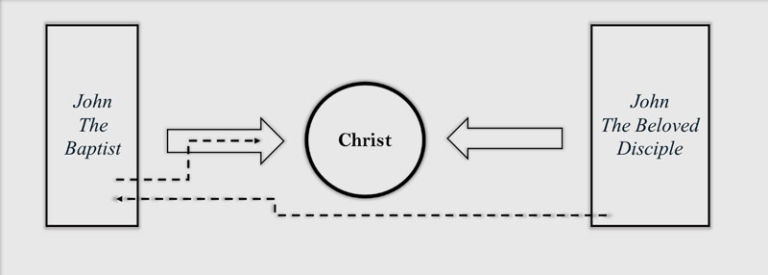
Notice the Old and New Testaments pointing to Jesus combined with the New pointing back to the Old to point forward to Jesus. John wrote about Jesus, and he called into evidence a witness to point to the claims of Jesus as the long-awaited Messiah – the Eternal King. John the Baptist is portrayed as the OT figure foretold as the forerunner for the world’s Savior. The author of Hebrews also did this. Hebrews leverages the OT with the most emphasis to make a case for Christ as the central focus of all existence.
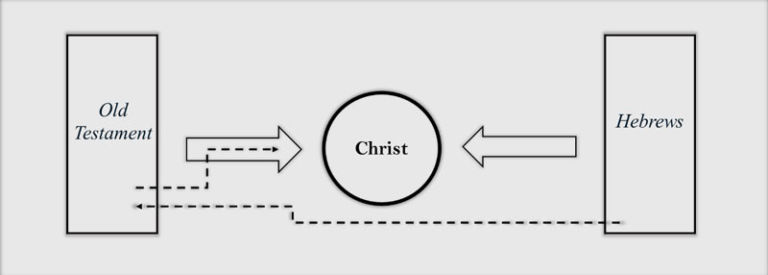
Here is what you need to know about the Old Testament: it remains God’s word. The purpose of the OT is to point to Jesus. It gives a picture of the character and nature of the Creator of the universe. God is holy. Human beings are not. Sin is on display for everyone to read in the OT. If you find yourself trying to argue about the historical accuracy of the OT with someone, my guess is that you will not make much progress at the moment. There is no scientific reason to doubt the claims of history in Genesis as literal fact. It is possible that if you do not take the historical events literally in the first five books of the OT, then you will encounter significant holes in your practical theology – how you live your life based on your beliefs. Many literary genres make up the OT, and sometimes literal interpretation is not intended. However, when Christ referenced Adam, Noah, Abraham, Moses, and Jonah, He spoke of real people who lived. Read responsibly.
Jesus is the key to it all!
Hebrews
If you took a survey on which book of the Bible to begin with for teaching how to make sense of it all, Hebrews might not be remarkably high on the list. However, as the late Walter A. Henrichsen taught in After the Sacrifice, the book of Hebrews is the most excellent commentary we have on the Old Testament. The author of Hebrews, unknown to us now, pointed back to the Old Testament to point forward to Jesus the Christ from the first stroke of the pen. Note that the author immediately settles the issue of Christ’s supremacy over everything in existence, including the messengers of God of the Old Testament:
In the past God spoke to our ancestors through the prophets at many times and in various ways, but in these last days He has spoken to us by His Son, whom He appointed heir of all things, and through whom also He made the universe (Hebrews 1:1-2, NIV).
There is a continual effort to point back to the Old Testament by the Hebrews author to point forward to Jesus and give the reader clarity of centuries-old writings and practical information to live differently.
Jesus is superior to angels because He is precisely God (1:3-4). The author pointed back to Old Testament passages eleven times to point forward to Jesus and show His superiority to angels as He provided salvation to humankind (1:5-2:15). Despite His superiority over all created beings, He entered His creation as a vulnerable human being to destroy the devil by doing what no human could. Now, we can see that Christ is superior to Moses (3:1-4:13), the Old Testament priesthood (4:14-7:28), and He instituted the new covenant, which is superior to the old (8:1-10:18).
While making the case that Moses was a faithful servant among God’s house, the reader is reminded not to follow the example of those who were with Moses and failed to believe God at His word. Their unbelief led to their hardening, and they could not enter God’s rest for them. This unbelief is an Old Testament history lesson provided for the New Testament reader. The deceitfulness of sin is that a lack of trust in God will lead to death (3:12-13). After witnessing the miracles and coming out of Egypt, walking on dry ground through the Red Sea, being fed in the desert by God, agreeing to a covenant relationship with Him, the people did not believe that God would sustain them. God promised, but they did not believe His promise because they viewed earthly challenges without trusting Him to keep His word. For this reason, they were not allowed to enter God’s rest. However, we who have heard the gospel of God, that faith in Christ for our salvation leads to eternal life with Him, are encouraged to make every effort to enter His rest through belief in God’s promise to sustain us eternally (4:1-11).
Hebrews is a nonstop history lesson while presenting Jesus as the focus of our faith. The superiority of faith to observing rituals and rules concludes the letter (10:19-13:25). In closing, the history lessons move from making the argument of Christ’s superiority to instruction to persevere in faithfulness to Him. How does the author go about this task to encourage the reader to stay focused on Christ regardless of earthly circumstances? By reiterating God’s promise to return and provide an eternal inheritance (10:35-39). Who can testify to this future reality? A chronological list of Old Testament figures who believed God long before Jesus came and willingly stood as a mediator between God and man by His sacrifice, opening the way for more people to know Him. They believed God at His word to do what He said He would do (11:1-40). We have the benefit of being on the other side. Just look at their fantastic faith and be encouraged. Follow through in trusting God at His word.
Let us remember one crucial fact: Hebrews is not the only source we have that utilizes the Old Testament to point forward to Jesus. The entire New Testament points back to the Old Testament to point forward to Jesus. Both look forward to His second coming, at which time everyone in history will spend eternity with or without God. Fix your eyes on Jesus and trust Him through everything you face until He comes to fix this mess. Encourage one another with these words.
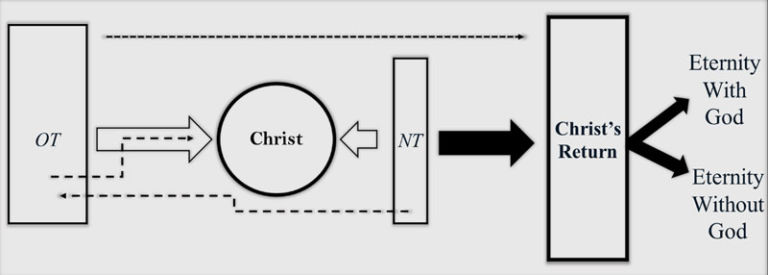
How would you describe the entire Bible to someone using only a few words?

